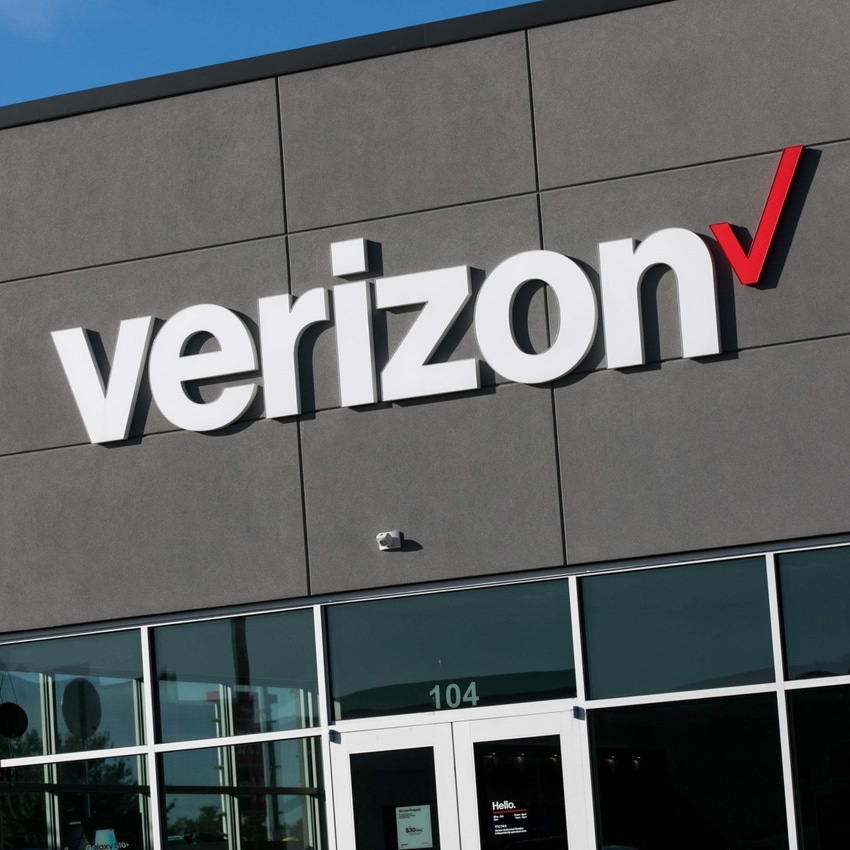Verizon rules out putting its core in the public cloud
Sampath Sowmyanarayan, the CEO of Verizon Business, says there are some 'red lines' his company is not prepared to cross.

AMSTERDAM – Network X – "It's called the core for a reason," said Verizon Business CEO Sampath Sowmyanarayan with a smile. His company's number-one US rival stunned many onlookers in June last year when it announced plans to run its 5G network, core and all, in the public cloud of Microsoft Azure. Outside AT&T, telco executives have been shaking their heads over the deal like a schoolteacher marking a bad exam paper, while AT&T has been trying to justify the arrangement, insisting it has not lost control.
That is not how Sowmyanarayan sees it. "I strongly believe that large telcos should own their own destiny – so, for example, I will never be putting our core network on a hyperscaler," said the boss of Verizon's enterprise unit during a panel session at the Network X event in Amsterdam earlier today. "We need to control it, we need to own the stack, we need to manage through it. Some of our partners and competitors have done that. We will not be doing that. I want to have control over our OSS/BSS stack."
The emphatic message seems like a blow to Microsoft. After news first broke of its tie-up with AT&T, the software giant was revealed to have acquired various network cloud assets from the US telco and the staff needed to manage them. Along with Affirmed Networks and Metaswitch, two core network developers Microsoft bought in 2020, these assets and experts now underpin the offer it is pitching to other telcos, branded Azure Operator Distributed Services (or AODS).
Figure 1:  Verizon Business CEO Sampath Sowmyanarayan says there are 'red lines' he won't cross.
Verizon Business CEO Sampath Sowmyanarayan says there are 'red lines' he won't cross.
(Source: Iain Morris/Light Reading)
Verizon would have been an unlikely client for a service based on AT&T's technology. But Sowmyanarayan – who succeeded Tami Erwin in the top job after her retirement in May – has ruled out doing anything similar with either AWS or Google Cloud, Microsoft's two big rivals in the market for public cloud services.
"There are some red lines we won't cross," Sowmyanarayan told Light Reading during an interview at Network X. "The core network we would like to do ourselves. That is a big point of differentiation between us and our biggest competitor in the US," he added in a clear reference to AT&T and its deal with Microsoft.
Lots of carriers, one stack
One of Sowmyanarayan's chief concerns seems to be that entrusting core network services to a few public clouds would make differentiation even harder. "A lot of services are going to sit at the core," he said. "If this is commoditized and every carrier has exactly the same stack, where is differentiation going to come from?" Earlier in the day, he told conference attendees that hyperscalers with ownership of the computing layer and applications stack were "trying to commoditize the network layer below."
Despite the complaint, Verizon maintains relationships with all three hyperscalers and is not averse to running IT and some telco workloads in the public cloud. "It all comes down to differentiation for us," he said. "There are some things we do that are truly differentiated, some that are difficult to differentiate. System performance and system management – those are true differentiators for us."
There is also concern about "lock-in," when a company cannot move easily from one cloud to another. Public cloud customers, including Netflix and Snap, have complained that porting workloads between clouds remains technically difficult and prohibitively expensive. Moving to another provider looks even tougher for anyone heavily invested in a particular cloud's services. "We don't want to be in a lock-in situation," said Sowmyanarayan. "When we architect our solutions, we try to spread them over multiple clouds, and we host on our own. Having that flexibility is important."
The bad news for Microsoft is that Sowmyanarayan's concerns are shared by other senior executives on the technology side. Last year, Scott Petty, Vodafone's chief digital officer, said AT&T's deal with the software company was like "outsourcing a core competency." Neil McRae, currently chief architect of BT, has been even more scathing. "Still want to put your network core into the public cloud? #suckers" he tweeted after an outage at AWS.
AT&T has defended its arrangement and contacted Light Reading to say that its network core, based on the "standalone" version of the 5G standard, will run on Microsoft Azure technology but inside its own network data centers.
Earlier this month, Rick Lievano, the chief technology officer of Microsoft's telecom business, said he reckoned only about a fifth of telco workloads would run more efficiently in a private rather than a public cloud environment. "It's the laws of physics, the proximity to the end customer, the edge locations that require certain workloads to be there because of latency and bandwidth constraints and regulatory requirements," he told Light Reading during an interview at Digital Transformation World in Copenhagen.
But if Sowmyanarayan's fear of commoditization by cloud is widespread, the hyperscalers so determined to sign up telcos may have a much harder sell on their hands.
Update: This article has been changed since it was first published to include input from AT&T. The word "ever" has also been removed from the headline after Verizon pointed out that Sowmyanarayan did not use it.
Related posts:
— Iain Morris, International Editor, Light Reading
Read more about:
EuropeAbout the Author(s)
You May Also Like




_International_Software_Products.jpeg?width=300&auto=webp&quality=80&disable=upscale)







